Unveiling the Mysteries of Hou Tu Miao: A Cultural Gem in China
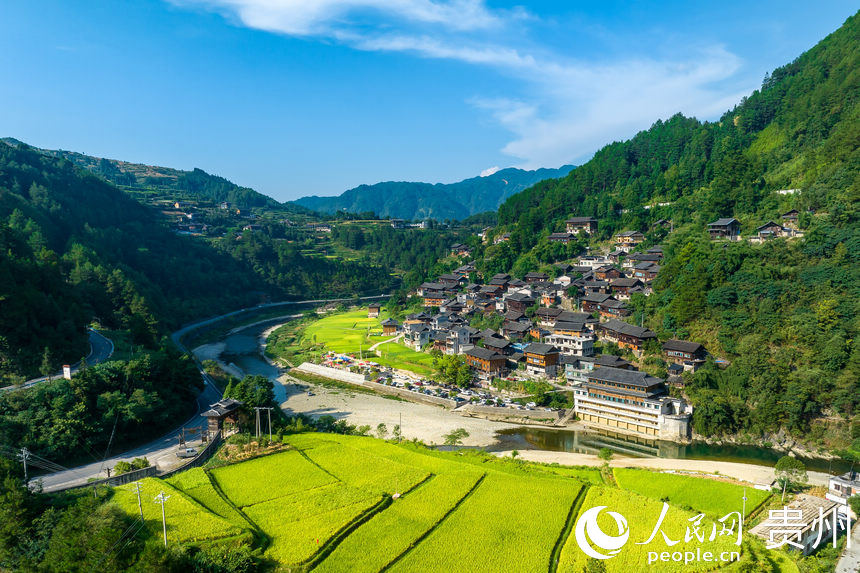
An Essential Guide to Visiting Hou Tu Miao
In This Guide
- An Essential Guide to Visiting Hou Tu Miao
- The Rich History and Legends of Hou Tu Miao
- Main Highlights: What You Absolutely Can’t Miss
- Planning Your Visit: A Practical Guide
- Tickets: Prices, Booking, and Tips
- How to Get There: A Complete Transportation Guide
- Local Cuisine and Accommodation Nearby
- Frequently Asked Questions
- Final Thoughts on Your Trip
Visiting Hou Tu Miao (后土庙) is more than just a journey to a site of worship; it’s an invitation to immerse yourself in the rich tapestry of Chinese history and culture. Nestled in the picturesque region of Guizhou, this temple is dedicated to the Earth God, a figure revered in Miao culture, and serves as a vibrant symbol of the community’s agricultural roots and spiritual beliefs.
As you step into the temple grounds, you are greeted by the enchanting sounds of traditional Miao music, the scent of incense wafting through the air, and the sight of intricate architectural designs that tell stories of a bygone era. Each corner of the temple reflects the deep reverence the Miao people hold for nature and their ancestors, making it a perfect destination for travelers seeking authenticity and connection to local traditions.

Hou Tu Miao.
Why Visit Hou Tu Miao?
- Cultural Significance: Understand the role of the Earth God in Miao cosmology and the importance of agriculture in their lives.
- Architectural Beauty: Marvel at the traditional wooden structures, vibrant decorations, and the distinctive style that captures the essence of Miao craftsmanship.
- Local Festivals: Time your visit to coincide with Miao festivals, where you can experience colorful performances, traditional dances, and the warm hospitality of the locals.
- Stunning Scenery: Surrounding the temple are breathtaking landscapes, including lush rice terraces and rolling hills, perfect for nature lovers and photographers alike.
Tips for Your Visit
- Respect Local Customs: Engage with the locals respectfully, especially during ceremonies. Participating in rituals, like offering incense, can enrich your experience.
- Try Local Delicacies: Don’t miss out on tasting traditional Miao dishes, including rice wine served in unique ways, which are often part of local gatherings.
- Plan for Weather: Guizhou’s weather can be unpredictable, so dress in layers and be prepared for rain if visiting during the wet season.
A visit to Hou Tu Miao is not just a stop on your travel itinerary; it’s a chance to step into a living history, where the past and present harmoniously blend, inviting you to discover the enduring spirit of the Miao people.
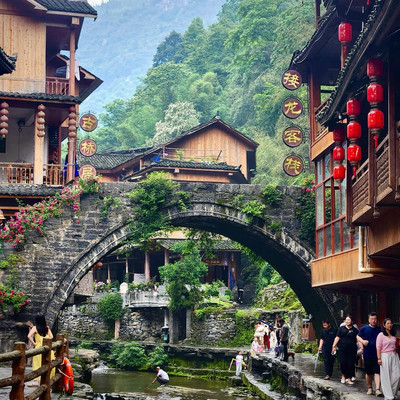
Hou Tu Miao.
The Rich History and Legends of Hou Tu Miao
Discovering the Rich History and Legends of Hou Tu Miao
Nestled in the heart of Guizhou Province, the Hou Tu Miao (后土庙), or the Temple of the Earth, is more than just a remarkable architectural site; it is a beacon of the rich cultural tapestry that is woven through the history of the Miao ethnic group. This temple honors Hou Tu, the Earth God, and serves as a spiritual center for the Miao community, representing their deep-rooted connection to the land and their agricultural lifestyle.
A Historical Overview
The origins of Hou Tu Miao date back centuries, with its foundations steeped in ancient agricultural practices and animistic beliefs. The Miao people, recognized as one of China’s 55 officially recognized ethnic minorities, have long revered the Earth as the provider of life. The temple is not just a place of worship; it is a symbol of the Miao’s agricultural heritage, reflecting their reliance on the bounty of nature.
Historically, the temple has served as a gathering place for various agricultural rituals, including ceremonies for planting and harvesting. These rituals are deeply intertwined with Miao folklore, reinforcing the community’s bond with their ancestors and the earth itself. The temple’s architecture, characterized by intricate carvings and vibrant colors, tells stories of the Miao people’s struggles and triumphs throughout history.
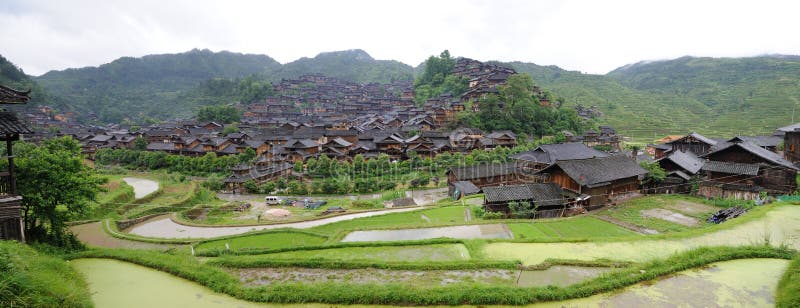
Hou Tu Miao.
Legends That Shape Identity
The legends surrounding Hou Tu Miao are as vibrant as the temple’s facade. One prevalent legend speaks of the Earth God’s creation of lush fields and fertile lands, which the Miao people have tended for generations. According to the tale, the Earth God once roamed the land, blessing the soil and teaching the Miao people the art of farming. In return, the community has dedicated their lives to honoring him through rituals and festivals, ensuring the prosperity of their harvests.
Another legend recounts the mythical origins of the Miao people themselves. It is said that the first Miao individuals were born from the union of the Earth and the Sky, symbolizing the harmony between humanity and nature. This belief not only underscores the Miao’s deep-seated connection to their environment but also highlights their uniqueness among the various ethnic groups in China.
Cultural Significance Today
Today, Hou Tu Miao continues to play a vital role in the cultural landscape of the Miao community. The temple hosts seasonal festivals that feature traditional music, dance, and food, drawing visitors both locally and internationally. These celebrations are not merely for entertainment; they are vital for preserving Miao traditions and educating younger generations about their heritage.

Hou Tu Miao.
International travelers seeking an authentic experience will find that participating in these festivals offers a glimpse into the vibrant life of the Miao people. From the melodious sounds of traditional Miao songs to the sumptuous flavors of local cuisine, the temple is a gateway to understanding the Miao’s identity and their enduring respect for nature.
Conclusion
Visiting Hou Tu Miao provides a unique opportunity to explore the intersection of history, legend, and culture within the Miao community. This temple stands not only as a monument to the Earth God but also as a testament to the resilience and rich cultural heritage of the Miao people. For those with a keen interest in Chinese history and culture, a journey to this sacred site will be both enlightening and inspiring.
Main Highlights: What You Absolutely Can’t Miss
Discover the Unmissable Highlights of Hou Tu Miao (后土庙)
Nestled in the picturesque landscape of Kaili, Hou Tu Miao, or the Hou Tu Temple, stands as a testament to the rich cultural heritage of the Miao people. This revered site not only serves as a spiritual haven but also offers visitors an immersive experience into the customs and traditions of one of China’s most vibrant ethnic groups. Here are the main highlights you absolutely can’t miss during your visit:
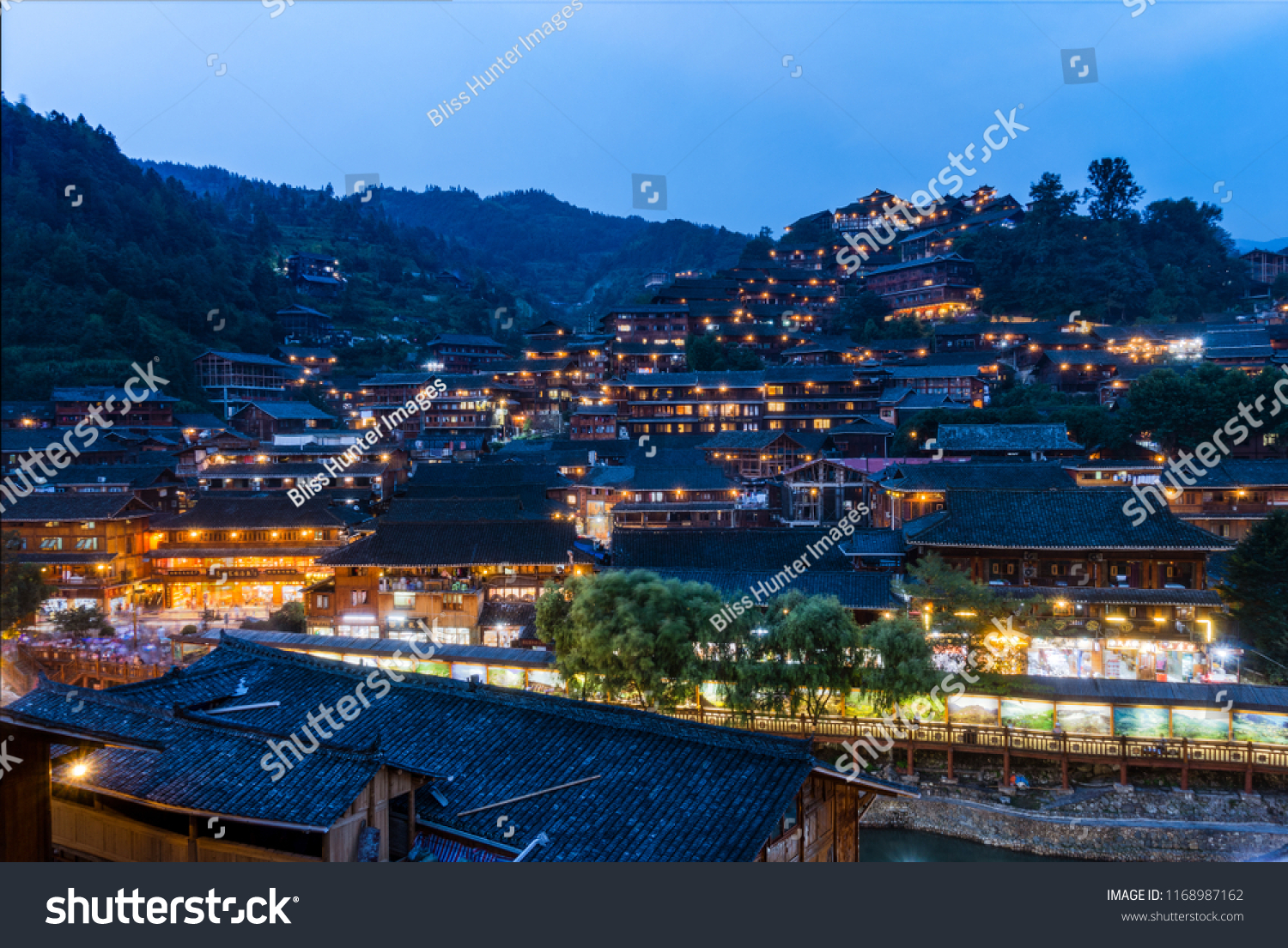
Hou Tu Miao.
1. Architectural Marvel
The temple itself is an exquisite example of traditional Miao architecture. With its intricate wood carvings and vibrant murals depicting Miao folklore, each corner of the temple tells a story. Be sure to take your time exploring the various altars dedicated to the Earth God and other deities, as the craftsmanship reflects centuries of cultural significance.
2. Cultural Ceremonies and Festivals
If your visit coincides with local festivals, you’ll witness breathtaking cultural performances that feature traditional Miao dance, music, and attire. Events like the Tiaohua (Flower Dance) Festival are particularly captivating, showcasing the colorful costumes and unique hairstyles of the Miao women, along with rituals that celebrate community and heritage.
3. Engaging with Local Villagers
One of the most enriching experiences at Hou Tu Miao is the opportunity to interact with the Miao villagers. You can participate in warm welcome ceremonies where villagers greet you with songs and offer homemade rice wine served in traditional vessels. Engaging with locals provides insights into their daily lives and age-old traditions.
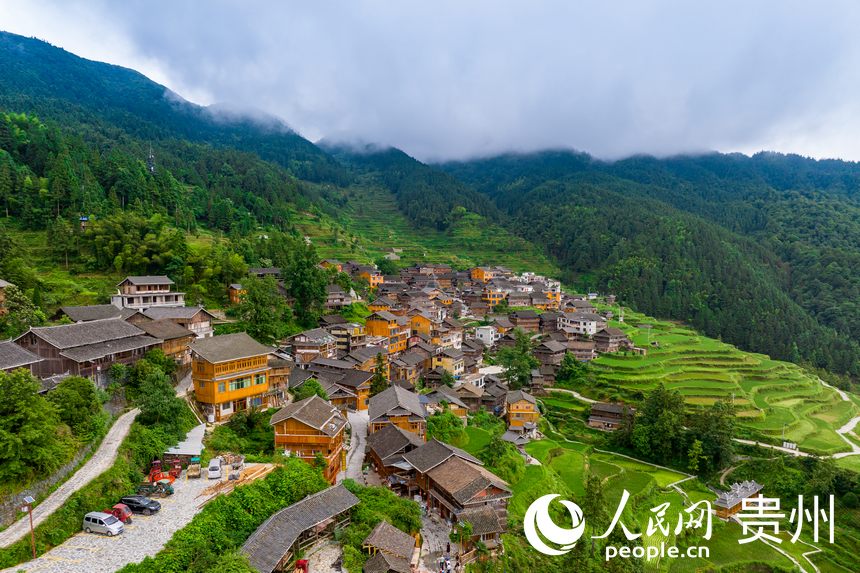
Hou Tu Miao.
4. Local Handicrafts and Souvenirs
As you wander through the surrounding village, make sure to explore the local handicraft shops. From intricately designed silver jewelry to handwoven textiles, these authentic Miao products are not only beautiful but also support the local economy. Purchasing a souvenir here means taking home a piece of Miao culture.
5. Scenic Surroundings
The backdrop of the temple is equally stunning. Surrounded by rolling hills and terraced rice fields, the natural beauty enhances the spiritual ambiance of Hou Tu Miao. A leisurely walk or hike in the nearby areas offers breathtaking views and a chance to witness the traditional agricultural practices of the Miao people.
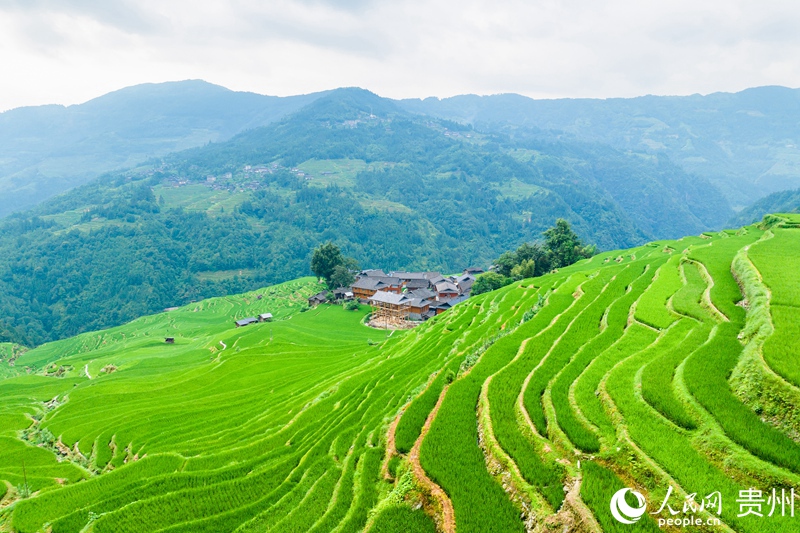
Hou Tu Miao.
6. Culinary Delights
Don’t miss the chance to indulge in traditional Miao cuisine. Local dishes often feature rice, vegetables, and meats, flavored with unique herbs and spices. Enjoy a meal with a local family for an authentic dining experience that showcases the warmth and hospitality of Miao culture.
7. Photography Opportunities
The vibrant colors of the temple, the intricate details of Miao costumes, and the stunning landscapes provide endless opportunities for photography. Capture the essence of your visit by taking snapshots of the lively scenes, whether it’s a festival in full swing or a tranquil moment in the rice fields.
8. Historical Significance
Lastly, take a moment to appreciate the rich history behind Hou Tu Miao. This temple has served as a spiritual center for the Miao people for generations, making it a vital part of their identity. Understanding its significance will deepen your appreciation for the site and the culture it represents.

Hou Tu Miao.
Conclusion
A visit to Hou Tu Miao is an unforgettable journey into the heart of Miao culture. With its stunning architecture, vibrant festivals, and the warm spirit of its people, the temple is an essential stop for anyone interested in the rich tapestry of Chinese history and ethnic diversity. Don’t miss the chance to create lasting memories in this enchanting corner of Guizhou!
Planning Your Visit: A Practical Guide
Visiting Hou Tu Miao: A Practical Guide
Nestled in the serene landscapes of Guizhou province, Hou Tu Miao (后土庙), or the “Temple of the Earth,” is a captivating destination that offers a glimpse into the rich cultural heritage of the Miao people. This guide provides essential information to ensure your visit is both enjoyable and enlightening.
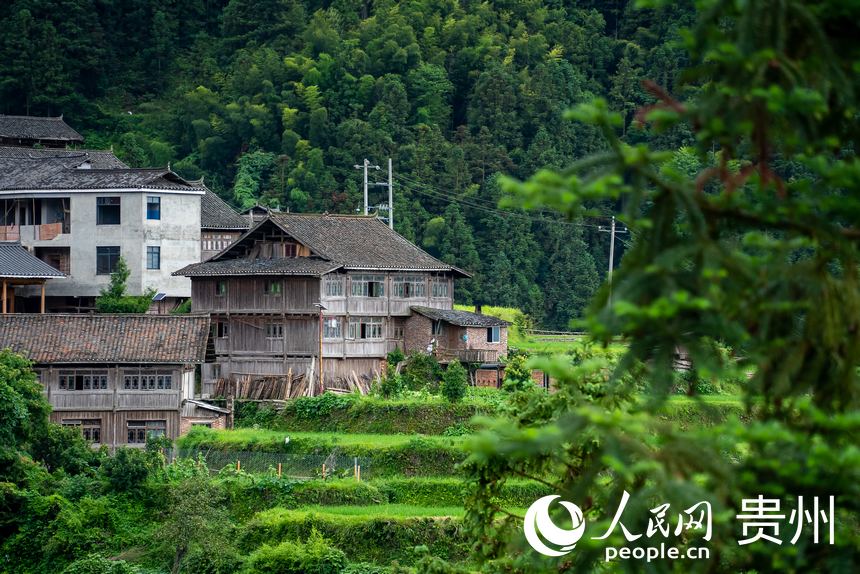
Hou Tu Miao.
Getting There
- Location: Hou Tu Miao is situated in Nanhuamiao Village, within Sankeshu Town, Kaili, Guizhou.
- Transportation:
- By Air: The nearest airport is Kaili Huangping Airport (KJW). From there, you can take a taxi or arrange for a private transfer to the village.
- By Train: Kaili is accessible by train from major cities like Guiyang. Once in Kaili, local buses and taxis are available to reach the village.
- By Car: Renting a car is a convenient option, especially if you wish to explore the surrounding scenic areas.
Best Time to Visit
- Spring (March to May): Ideal for witnessing blooming flowers and traditional festivals.
- Summer (June to August): Warm weather but can be humid; great for hiking and outdoor activities.
- Autumn (September to November): Mild temperatures and stunning fall foliage.
- Winter (December to February): Colder, but offers a unique, tranquil atmosphere.
Cultural Etiquette
- Dress Modestly: When visiting the temple and local villages, it’s advisable to wear respectful clothing, especially in cultural and religious sites.
- Respect Local Customs: Participate in local traditions if invited, such as welcoming ceremonies with rice wine, but always do so with an open mind and respect for their customs.
- Photography: Always ask for permission before taking photographs of people or their homes.
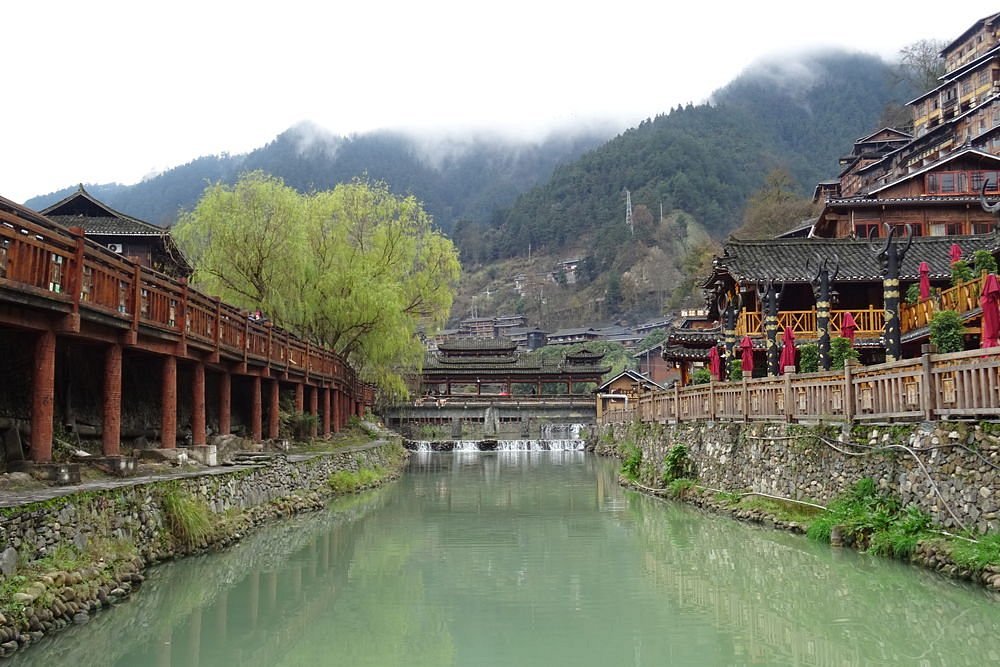
Hou Tu Miao.
What to Expect
- Temple Architecture: Hou Tu Miao features traditional Miao architectural styles, with intricate woodwork and colorful decorations. Spend time exploring the temple’s various halls and altars dedicated to earth deities.
- Cultural Performances: Engage with the local community through performances that showcase Miao music, dance, and traditional rituals. These events often provide an opportunity to taste local delicacies.
- Handicrafts: Discover unique Miao handicrafts, including textiles, silver jewelry, and traditional garments at local markets and shops.
Nearby Attractions
- Kaili Sunday Market: Experience vibrant local life at this bustling market, where Miao villagers gather to sell produce, crafts, and traditional foods.
- Leishan and Mt. Leigong: A short trip from Hou Tu Miao, explore stunning rice terraces and hike up Mt. Leigong for breathtaking views.
- Xijiang Qianhu Miao Village: Known as the “largest Miao village in the world,” this destination is perfect for experiencing Miao culture on a larger scale.
Accommodation Options
- Local Guesthouses: For an authentic experience, consider staying in a Miao family-run guesthouse. This allows for deeper cultural interaction and an understanding of daily life in the village.
- Hotels in Kaili: For more comfort and amenities, Kaili offers various hotels ranging from budget to mid-range options.

Hou Tu Miao.
Travel Tips
- Language: While Mandarin is commonly spoken, learning a few basic phrases in Miao can enhance your experience and impress the locals.
- Currency: The currency used is the Chinese Yuan (CNY). Ensure you have cash, as credit cards may not be widely accepted in rural areas.
- Connectivity: Mobile signal can be weak in remote areas. Consider downloading maps and guides before your trip.
Conclusion
A visit to Hou Tu Miao is not just a journey to a temple; it’s an invitation to experience the heart of Miao culture. The integration of breathtaking natural scenery with rich traditions makes it an unforgettable stop on any travel itinerary through China. Enjoy your adventure!
Tickets: Prices, Booking, and Tips
When planning your visit to Hou Tu Miao (后土庙), understanding the ticketing process and associated costs can enhance your experience. Below is a comprehensive guide to ticket prices, booking options, and practical tips for international travelers eager to delve into the rich tapestry of Chinese history and culture.

Hou Tu Miao.
Ticket Prices
- General Admission: The entrance fee to Hou Tu Miao is typically RMB 30 (approximately USD 5). This fee grants you access to the temple grounds and allows you to explore the intricate architecture and serene surroundings.
- Guided Tours: For a more immersive experience, consider joining a guided tour. Prices for guided tours can range from RMB 150 to RMB 300 (approximately USD 23 to USD 46) per person, depending on the length and inclusivity of the tour. These tours often include insights into the temple’s history and its significance to the Miao culture.
Booking Information
- Advance Booking: While tickets can often be purchased on-site, it is advisable to book in advance during peak tourist seasons to avoid disappointment. Online platforms such as Trip.com or local travel agencies provide convenient options for securing your tickets ahead of time.
- Group Discounts: If you are traveling with a group, inquire about group discounts. Many tour operators and the temple itself may offer reduced rates for larger parties, making it an economical choice for families or friends.
Tips for Your Visit
- Timing: Visit early in the day to enjoy a quieter experience. The temple can get crowded, especially on weekends and during local festivals.
- Cultural Etiquette: As a place of worship, it is important to be respectful of the customs and traditions observed at Hou Tu Miao. Dress modestly and maintain a respectful demeanor throughout your visit.
- Photography: Photography is generally allowed, but be mindful of any signs indicating restrictions. Capturing the beauty of the temple and its surroundings can greatly enhance your travel memories.
- Local Transport: If you’re not within walking distance, consider hiring a local taxi or using ride-hailing apps like Didi to reach the temple. Public transport options may also be available, but check schedules in advance.
Nearby Attractions
After visiting Hou Tu Miao, take the opportunity to explore the surrounding area. The temple is often included in broader cultural tours that feature other Miao villages and their unique traditions. Many visitors enjoy combining their temple visit with a trip to local markets or nearby rice terraces, offering a well-rounded cultural experience.
In conclusion, visiting Hou Tu Miao provides a fascinating glimpse into the Miao culture and Chinese history. By planning ahead and following these tips, you can ensure a rewarding and enriching experience at this remarkable site.
How to Get There: A Complete Transportation Guide
Navigating Your Way to Hou Tu Miao (后土庙)
Visiting Hou Tu Miao, also known as the Temple of the Earth, is a journey steeped in rich history and cultural significance. This comprehensive transportation guide will assist you in planning your visit to this captivating site located in the heart of Guizhou province. Whether you’re arriving from nearby cities or making a grand tour of the region, here’s how to reach this important cultural landmark.
Getting to Kaili
By Air:
The nearest major airport is Guiyang Longdongbao International Airport (KWE), which is approximately 150 kilometers from Kaili. From the airport, you can take a taxi or book a private transfer to reach Kaili.
By Train:
Kaili has a railway station with connections to major cities. High-speed trains are available from Guiyang, which is about a two-hour journey. Purchase your tickets in advance for a smoother experience, especially during peak tourist seasons.
By Bus:
Long-distance buses run frequently from Guiyang and other cities directly to Kaili. The bus ride takes about 2-3 hours, depending on traffic. The main bus station in Kaili is centrally located, making it easy to access local transport options.
Local Transport in Kaili
Once you arrive in Kaili, you have several options to get to Hou Tu Miao:
1. Taxi:
Taxis are readily available and are a convenient way to travel directly to the temple. Ensure you have the name and address written in Chinese for ease of communication.
2. Public Buses:
For a more budget-friendly option, public buses run from Kaili to the surrounding villages, including stops near Hou Tu Miao. Look for bus routes that connect to Nanhuamiao Village, the closest village to the temple.
3. Guided Tours:
Consider joining a guided tour that includes transportation to Hou Tu Miao along with other nearby attractions. This option not only saves you the hassle of navigation but also provides valuable insights into the cultural significance of the sites you visit.
Exploring the Surrounding Area
Kaili is a gateway to the Miao culture, and there are several nearby attractions worth exploring:
-
Xijiang Qianhu Miao Village: This is one of the largest Miao villages and offers an immersive experience into their traditional lifestyle. It’s accessible by bus or taxi from Kaili.
-
Langde Miao Village: Known for its authentic Miao culture and stunning natural scenery, Langde is another must-visit location that can be reached via local transportation.
-
Mt. Leigong: For those looking for adventure, hiking trails to Mt. Leigong offer breathtaking views and a chance to experience the local flora and fauna.
Tips for Travelers
- Language Barrier: While English is not widely spoken, having a translation app or a phrasebook can be very helpful.
- Cash Preference: Many local shops and eateries may only accept cash, so it’s wise to have some Chinese yuan on hand.
- Cultural Sensitivity: When visiting the temple and local villages, respect local customs, especially during ceremonies or festivals.
With this transportation guide, you are well-equipped to embark on your journey to Hou Tu Miao. Enjoy the rich history, vibrant culture, and stunning landscapes that await you in this beautiful part of China!
Local Cuisine and Accommodation Nearby
Nestled in the serene setting of Kaili, near the historic Hou Tu Miao (后土庙), travelers have the unique opportunity to immerse themselves in the rich culinary traditions and welcoming accommodations of the Miao people. Here’s a guide to savoring local flavors and finding comfortable places to stay during your visit.
Culinary Delights
Local Dishes to Try
-
Sour Fish Soup (酸汤鱼)
A staple of Miao cuisine, this dish features freshwater fish simmered in a tangy broth made from fermented vegetables. The contrasting flavors create a refreshing experience that encapsulates the essence of local cooking. -
Rice Wine (米酒)
The Miao are renowned for their homemade rice wine, often served during traditional ceremonies. Be prepared for a warm welcome, as visitors are frequently invited to partake in this local favorite, poured from traditional cowhorn cups. -
Steamed Rice with Preserved Vegetables (腊味米饭)
This dish combines fragrant rice with an assortment of preserved vegetables, often sourced from the surrounding terraced fields. The meticulous preparation reflects the Miao’s deep connection to their agricultural heritage. -
Grilled Fish and Meats (烧烤)
Grilling is a favored cooking method here, with an array of fish and meats marinated with aromatic spices and grilled to perfection. Sample these dishes at local night markets for a truly authentic experience. -
Herbal Teas and Forest Delicacies
Local herbal teas made from mountainous ingredients accompany many meals, while foraged ingredients like mushrooms and wild greens are often featured in seasonal dishes.
Accommodations
Where to Stay
-
Miao Village Guesthouses
For an authentic experience, opt for guesthouses in Miao villages, where you can stay in traditional wooden homes. Many of these guesthouses offer cultural experiences, such as cooking classes and guided village tours. -
Kaili International Hotel
Located in the heart of Kaili, this hotel provides comfortable accommodations with modern amenities. It’s an excellent base for exploring the nearby cultural sites. Guests appreciate the blend of local decor with contemporary comfort. -
Xijiang Qianhu Miao Village Hotel
Situated in the picturesque Xijiang Miao Village, this hotel offers stunning views of the rice terraces. Guests can enjoy local cuisine at the on-site restaurant, which features dishes prepared with fresh, locally sourced ingredients. -
Leishan County Homestays
Experience Miao hospitality firsthand by staying in a homestay in Leishan County. Hosts often serve homemade meals and share stories of Miao culture, providing an enriching experience during your trip. -
Cultural Lodges
Various lodges are available that focus on preserving Miao traditions. These accommodations often feature cultural performances, workshops, and excursions to nearby attractions, making them ideal for culturally curious travelers.
Conclusion
Visiting Hou Tu Miao offers not just a glimpse into a vibrant cultural heritage but also a chance to indulge in the delightful flavors of Miao cuisine. With a range of accommodations that cater to different tastes and budgets, your stay can be as enriching as it is comfortable. Whether sampling traditional dishes or engaging with local communities, each experience will deepen your appreciation for this unique corner of China.
Frequently Asked Questions
Common Questions About Hou Tu Miao (后土庙)
1. What is Hou Tu Miao and its significance?
Hou Tu Miao, or the Temple of the Earth, is a revered shrine in Chinese culture dedicated to Hou Tu, the Earth God. It symbolizes the connection between the Earth and its inhabitants, embodying agricultural prosperity and the balance of nature. Visitors often seek blessings for a bountiful harvest and safety.
2. Where is Hou Tu Miao located?
This temple is situated in Nanhuamiao Village, Sankeshu Town, Kaili, in Guizhou Province. It’s easily accessible for those traveling to the region, allowing for a deeper understanding of local Miao culture.
3. What can I expect during my visit?
Visitors can experience traditional Miao rituals, local music, and dance performances. The temple is known for its vibrant ceremonies, especially during festivals, when the community comes together to honor the Earth God with offerings and celebrations.
4. Is there an entrance fee?
Yes, there is a modest entrance fee that often includes a welcome drink of local rice wine and a cultural performance. This fee supports the maintenance of the temple and the preservation of Miao heritage.
5. When is the best time to visit Hou Tu Miao?
The temple can be visited year-round, but the most vibrant experiences occur during traditional festivals, including the Flower Dance Festival. Visiting during these times allows travelers to witness the rich cultural practices of the Miao people in full swing.
6. How can I get to Hou Tu Miao from Kaili?
Kaili serves as a convenient base for visiting Hou Tu Miao. Local transportation options like buses and taxis are available, and many travelers opt for guided tours that provide insights into the Miao culture and history.
7. Are there any local accommodations nearby?
Yes, there are several guesthouses and hotels in Kaili that cater to travelers looking to explore the region. Staying in Kaili provides easy access to Hou Tu Miao and other nearby attractions, such as the picturesque rice terraces and other Miao villages.
8. What should I wear when visiting Hou Tu Miao?
Visitors are encouraged to dress modestly and comfortably. Since the temple is a place of worship, respectful attire is appreciated. If you plan to participate in cultural activities or hikes, wear comfortable shoes suitable for walking.
These FAQs should help you prepare for a visit to Hou Tu Miao, enriching your understanding of this vital cultural landmark in Guizhou Province.
Final Thoughts on Your Trip
As your journey through the enchanting landscapes of Kaili and its captivating Miao culture comes to a close, take a moment to reflect on the rich tapestry of experiences you’ve woven throughout your visit to Hou Tu Miao and its surrounding villages. This region, brimming with history and tradition, offers a unique glimpse into the lives of the Miao people, whose vibrant customs and warm hospitality create an atmosphere of connection and discovery.
Embrace the Cultural Mosaic
The Miao culture, one of China’s 55 officially recognized minority groups, is both diverse and intricate. From the stunning traditional attire adorned with intricate silver jewelry to the melodious tunes of folk songs echoing through the valleys, every moment spent here is a celebration of heritage. You’ve witnessed the colorful Tianhua Festival, tasted the locally brewed rice wine, and even participated in age-old rituals that bind the community together.
Cherish Authentic Experiences
Whether it was wandering through the picturesque rice terraces of Leishan, engaging with local artisans, or sharing a meal with a Miao family, these authentic encounters leave an indelible mark. They remind us that travel is not just about the destinations we visit, but the connections we forge and the stories we share.
Carry the Spirit of the Miao
As you prepare to depart, let the spirit of the Miao people accompany you. Their resilience, creativity, and deep-rooted sense of community serve as a testament to the enduring power of culture in our increasingly modern world.
Plan Your Return
With so much to explore, from the hidden gems in the lush mountainsides to the bustling Sunday markets, consider this journey just the beginning. The beauty of Hou Tu Miao and its surroundings beckons for further exploration.
In closing, may your travels continue to inspire curiosity and appreciation for the rich cultural landscapes that shape our world. Safe travels, and may your next adventure be as fulfilling as this one!